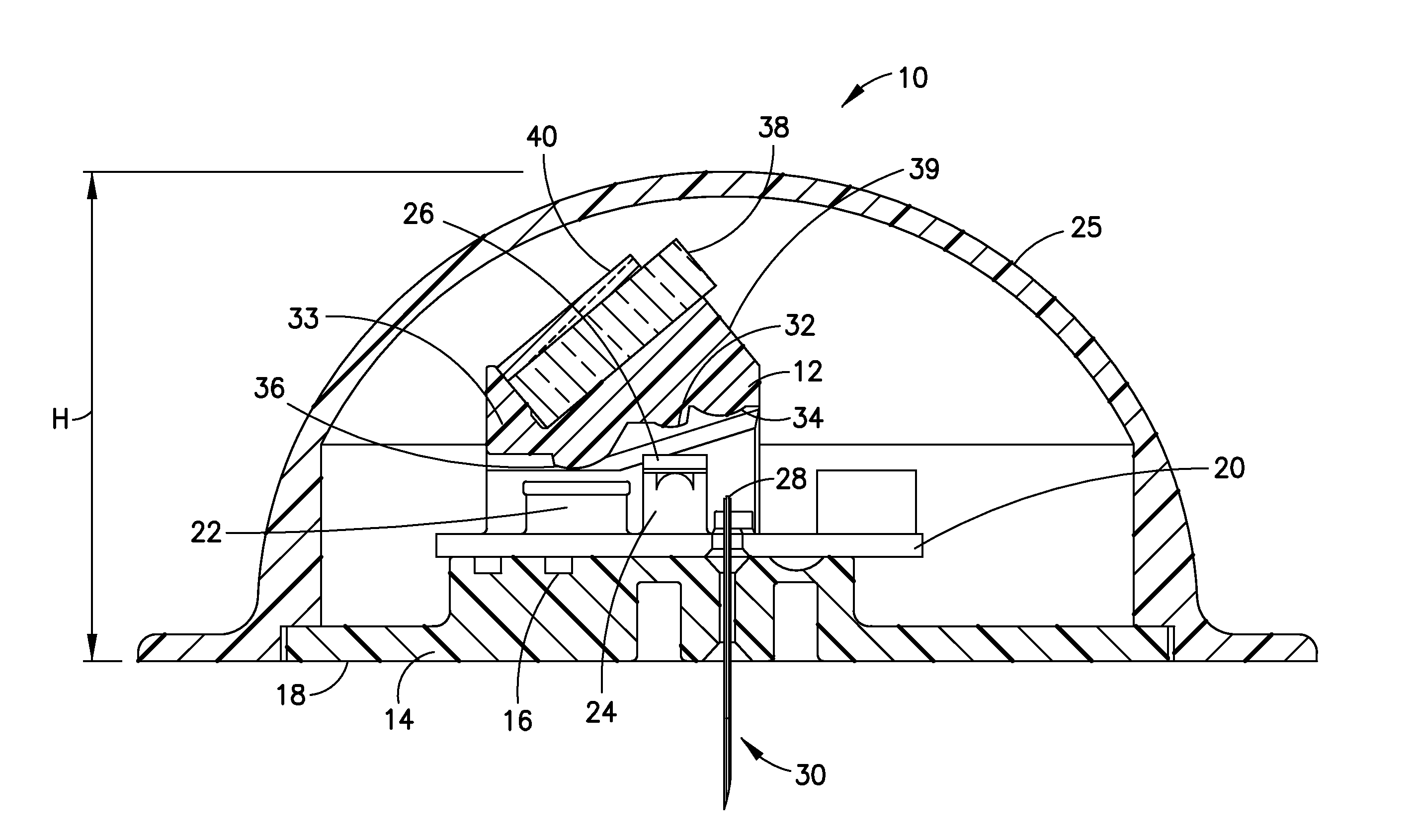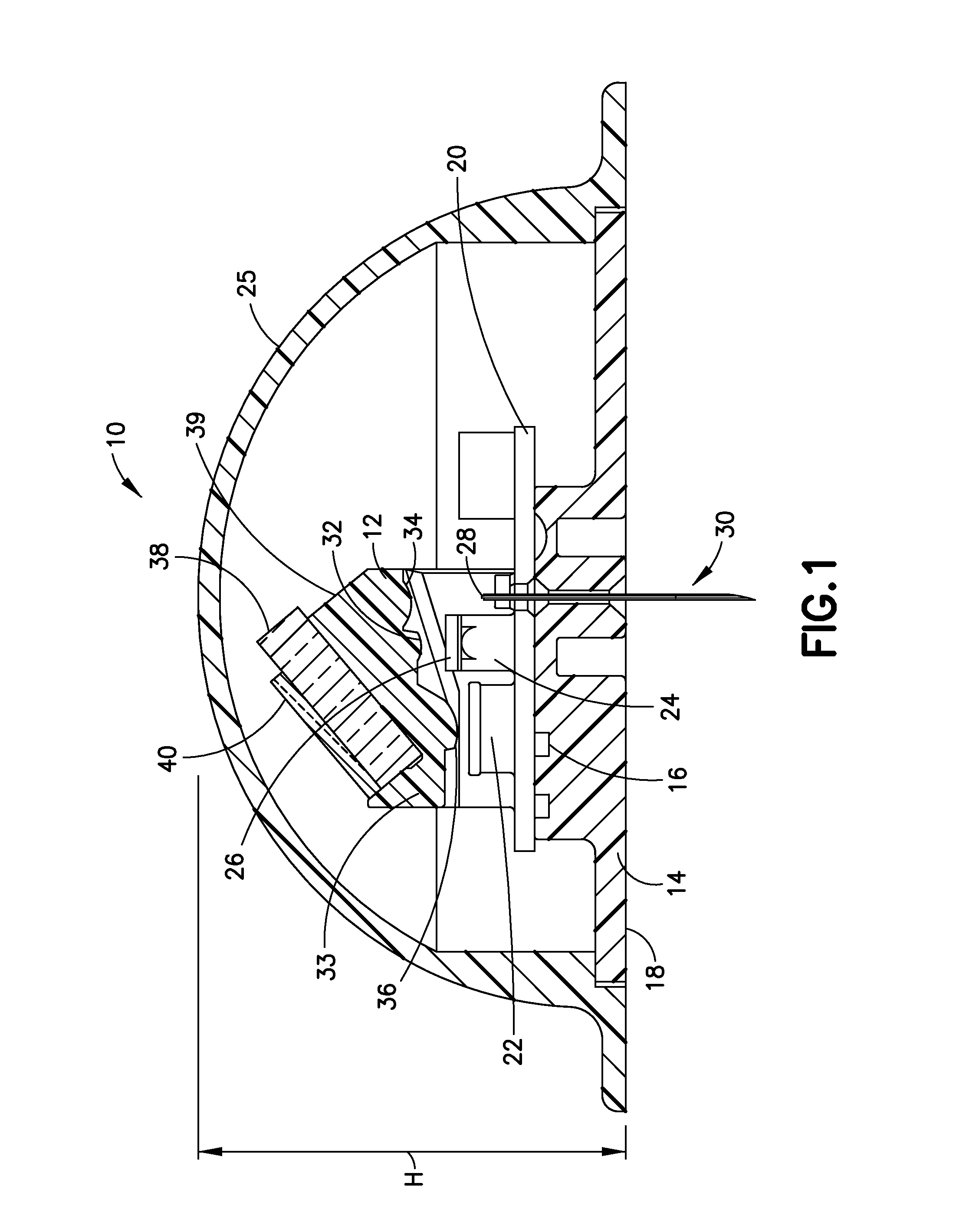Reduced Size Optical Coupler for Fluorescence Detection
a fluorescence detection and optical coupler technology, applied in the direction of fluorescence/phosphorescence, instruments, catheters, etc., can solve the problems of inefficiency, light detection, and inability to analyze the band wavelength in a certain way, so as to reduce the size of the cgm device and potential manufacturing costs, reduce light transmission inefficiencies, and increase the initial light emission
- Summary
- Abstract
- Description
- Claims
- Application Information
AI Technical Summary
Benefits of technology
Problems solved by technology
Method used
Image
Examples
Embodiment Construction
[0032]As will be appreciated by one skilled in the art, there are numerous ways of carrying out the examples, improvements and arrangements of CGM devices disclosed herein. Although reference will be made to the illustrative embodiments depicted in the drawings and the following descriptions, the embodiments disclosed herein are not meant to be exhaustive of the various alternative designs and embodiments that are encompassed by the disclosed invention.
[0033]In an illustrative embodiment according to the present invention, a continuous monitoring device is used in identifying an analyte, such as glucose in blood or interstitial fluid (ISF), using a biomaterial, such as glucose binding protein (GBP), that is brought into contact with the analyte. The continuous monitoring device includes a light source for emitting light used to illuminate the biomaterial. Light is emitted from the light source and reflected by an optical coupler and transmitted to the biomaterial via a fiber. The bi...
PUM
| Property | Measurement | Unit |
|---|---|---|
| height | aaaaa | aaaaa |
| height | aaaaa | aaaaa |
| fluorescent | aaaaa | aaaaa |
Abstract
Description
Claims
Application Information
 Login to View More
Login to View More - R&D
- Intellectual Property
- Life Sciences
- Materials
- Tech Scout
- Unparalleled Data Quality
- Higher Quality Content
- 60% Fewer Hallucinations
Browse by: Latest US Patents, China's latest patents, Technical Efficacy Thesaurus, Application Domain, Technology Topic, Popular Technical Reports.
© 2025 PatSnap. All rights reserved.Legal|Privacy policy|Modern Slavery Act Transparency Statement|Sitemap|About US| Contact US: help@patsnap.com



